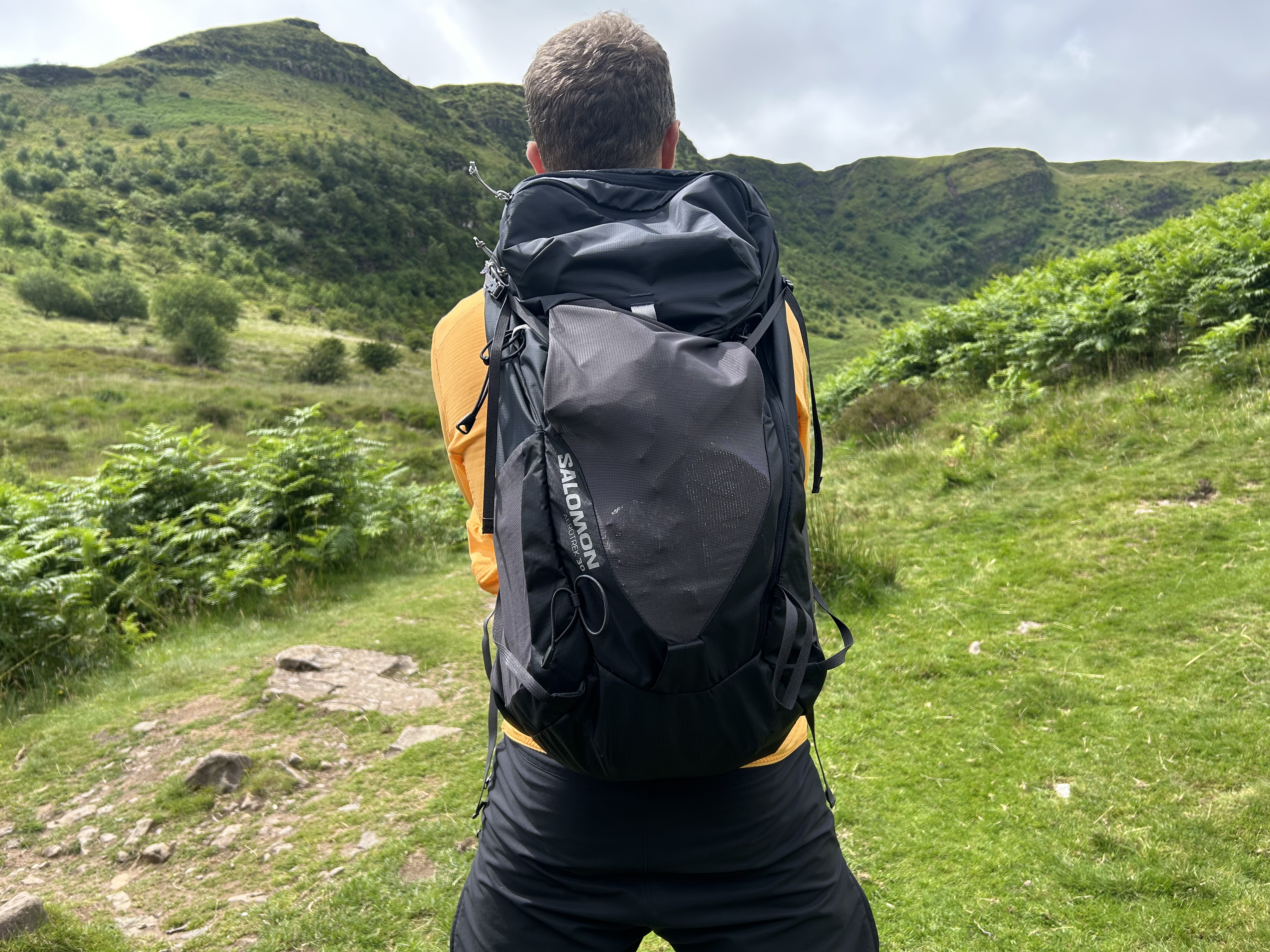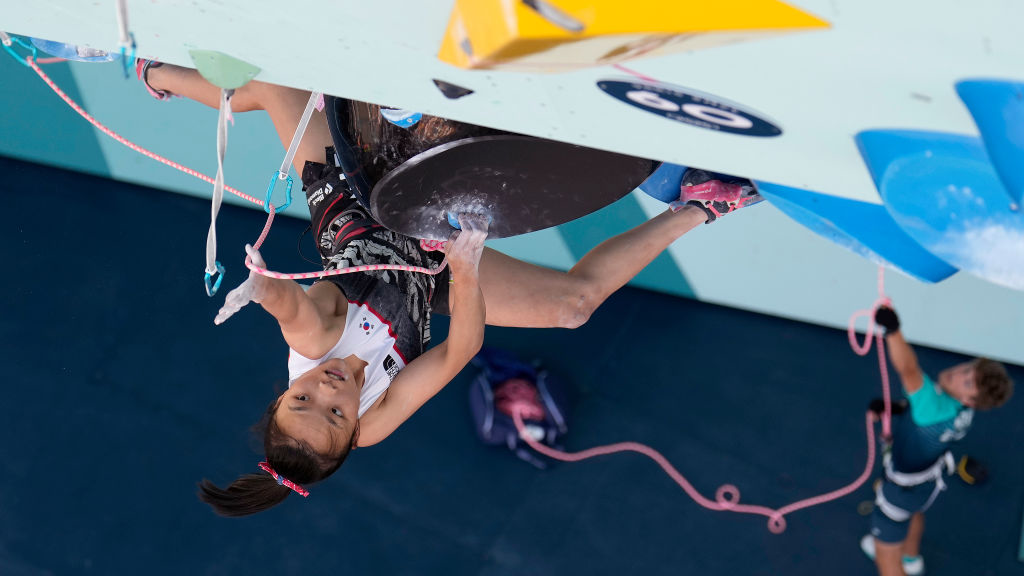Advnture Verdict
This is a solid daypack that successfully marries a low-weight build with support and stability. The harness system is well designed and makes for a comfortable carry. Storage options are plentiful too. There are loads of hydration possibilities and you can always keep essential items close to hand while on the move, thanks to well-placed mesh pockets. It’d score higher but for the lack of any mention of recycled materials or circularity, which seems a little out of touch in this day and age.
Pros
- +
Ventilated back panel
- +
Plenty of exterior mesh storage
- +
Fully array of hydration options
- +
Nicely cushioned at upper back and hips
- +
Comfortable, stable and supportive
Cons
- -
No mention of recycled materials
- -
Not as robust as some
You can trust Advnture
Salomon needs little introduction. The French brand rode the mountain adventure wave expertly, growing at great pace as trail running, adventure racing and fast hiking gained momentum over the last few decades. It benefited from its relationship with all-conquering athletes like Kilian Jornet, becoming a byword for speed in the mountains. Other brands scrambled to keep pace.
Formed in 1947 in Annecy, in the French Alps, the brand was bought by Adidas in 1997 and then, in 2005, Amer Sports swooped in, buying Salomon for around €485 million ($580 million), underlining the brand's strength and cache among adventurous folk. Amer’s impressive portfolio today also includes Arc’teryx, Peak Performance and Wilson.
The Aerotrek 30 is a daypack designed for speed and comfort on hiking trails. The Aero in the name seemingly refers to the breezy, ventilated, suspended panel that stops your back from getting too sweaty on long ascents. It could also be a nod to the pack’s relatively low weight. At 2lb 3oz (992g), it’s in the same featherweight category as other great daypacks, such as the Mammut Ducan 24. I was excited to see how it would cope in the hot summer backcountry.
First impressions
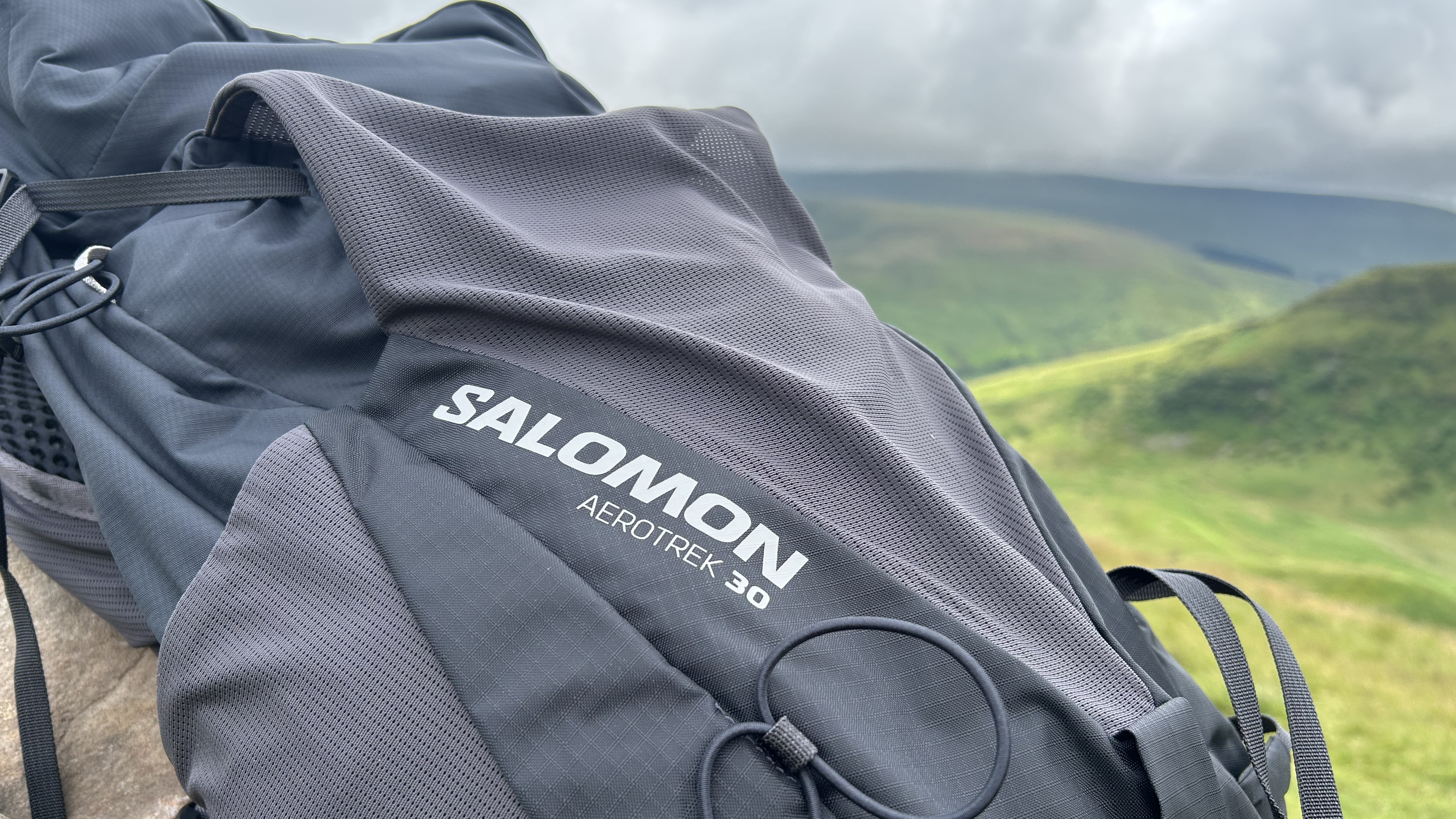
List price: £150 (UK)
Volume: 30L
Weight: 2lb 3oz / 992g
Sizes: S/M, M/L
Other versions available: 20L, 40L, 50L
Fabric: 100% polyamide body; 100% polyester lining and shoulder straps
The Aerotrek 30 has a similar vibe to the Montane Trailblazer XT25L in that it’s a hiking daypack that borrows features from running packs, making it a good option for fast and light adventures in the mountains. A key difference is the metal frame and suspended back system, which offers better breathability. And, despite the inclusion of such a frame and greater capacity, the Aerotrek 30 still manages to weigh virtually the same as the Trailblazer (in fact it weighs 0.6oz less).
There’s mesh everywhere. Five stretchy mesh pockets, latticed cushioning in the hip panel and shoulder straps, and in the suspended back panel. Unlike most daypacks, there’s no top lid, instead the pack opens via large U-shaped zipper, similar to the superb Osprey Manta 24. ‘But what about my old favorite: the zippered lid compartment?’ I hear your cry. Well, there’s still a lid-style zippered bit at the top of the pack, so fret not, friend.
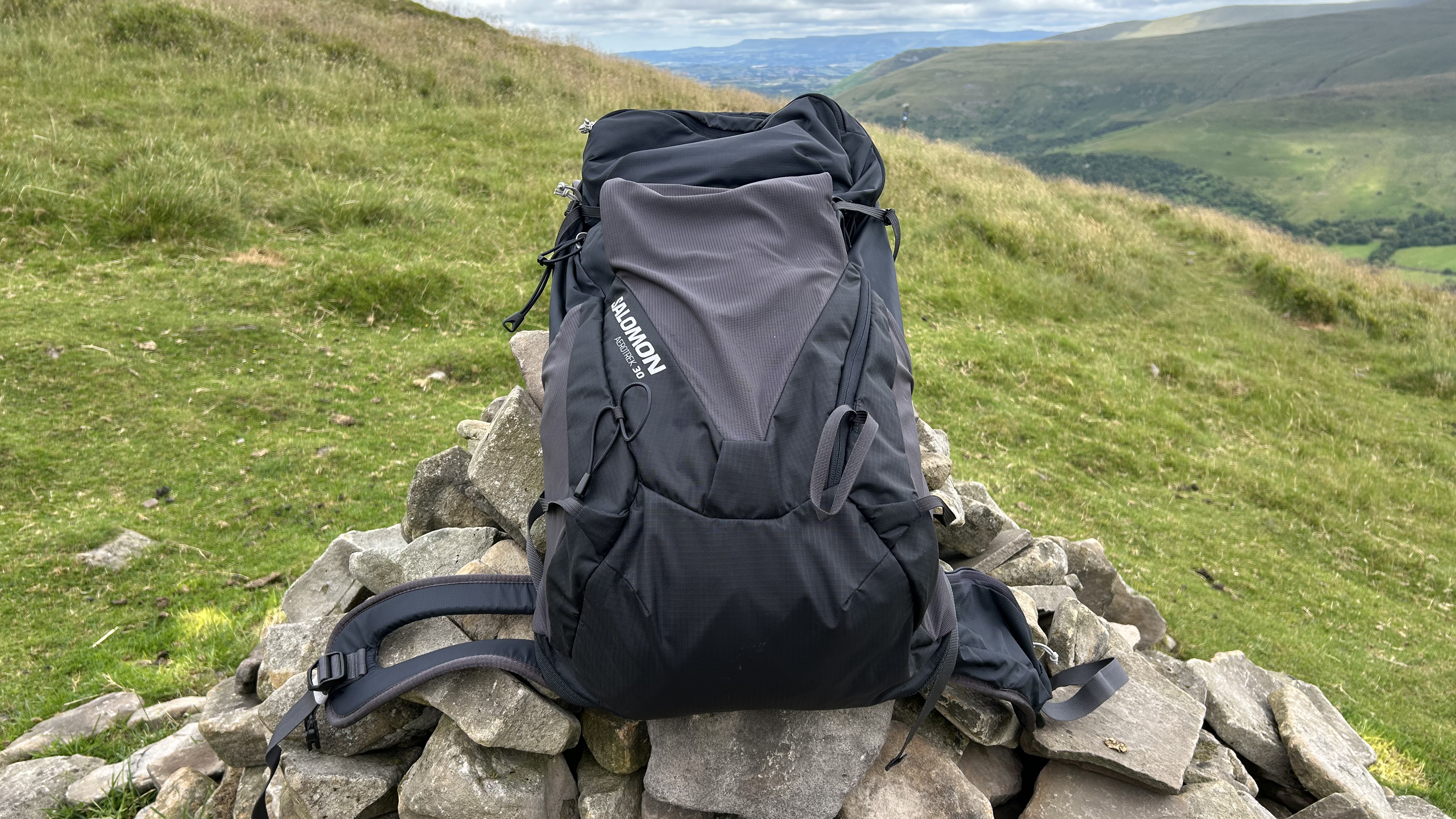
As a hiker who moves fast and light, I immediately liked the cut of this pack's jib. It’s lightweight, has loads of places to stash stuff and the harness system seemed excellent on first acquaintance. There’s even a little integrated emergency whistle. Oh, and it looks good too: modern and sleek.
Back panel & harness
A combination of polyester, polyamide and elastane is used to craft this pack, though there’s noticeably no mention of recycled materials or recyclability, which is something I’d expect in this day and age.
All the latest inspiration, tips and guides to help you plan your next Advnture!
The suspended mesh back panel, which Salomon calls the Advanced Air Chassis, is attached to a lightweight metallic frame, providing support, stability and comfort on the trails. It’s a fairly common design in modern daypacks, particularly as you move up the capacity scale. Generally, these kinds of packs are more breathable than more minimalist packs that do without such a panel.
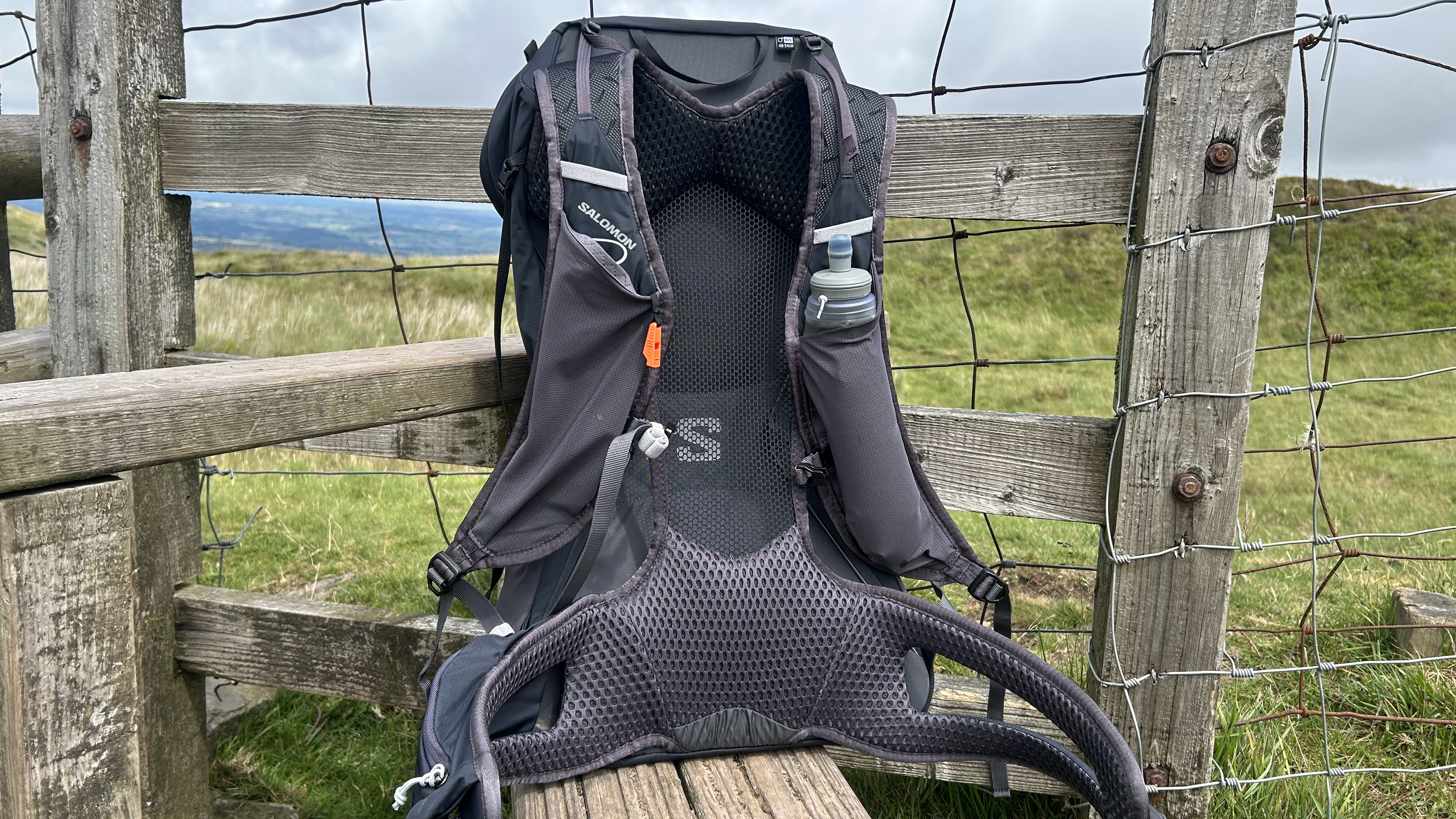
Above and below this suspended panel is latticed cushioning for the upper back and the lumbar region. While it’s not as fancy as the engineered-within-an-inch-of-its-life, 3D-printed support panel of the Osprey UNLTD AirScape 68, it doesn’t have to be, and it does the job just fine. This cushioning continues around the hip belt, providing both comfort and protection against dreaded chafing.
The entire harness system is fully adjustable, making it easy to find the right fit. It includes a detachable sternum stap that can be moved up and down (along an array of five daisy chain loops) to the appropriate height to best suit the wearer’s chest. It’s a much more robust system than the sliding straps seen on the likes of the Highlander Ben Nevis 52L Rucksack or the Osprey Hikelite 26, both of which I managed to break. (I’m obviously too heavy handed with my sternum straps.)
Storage
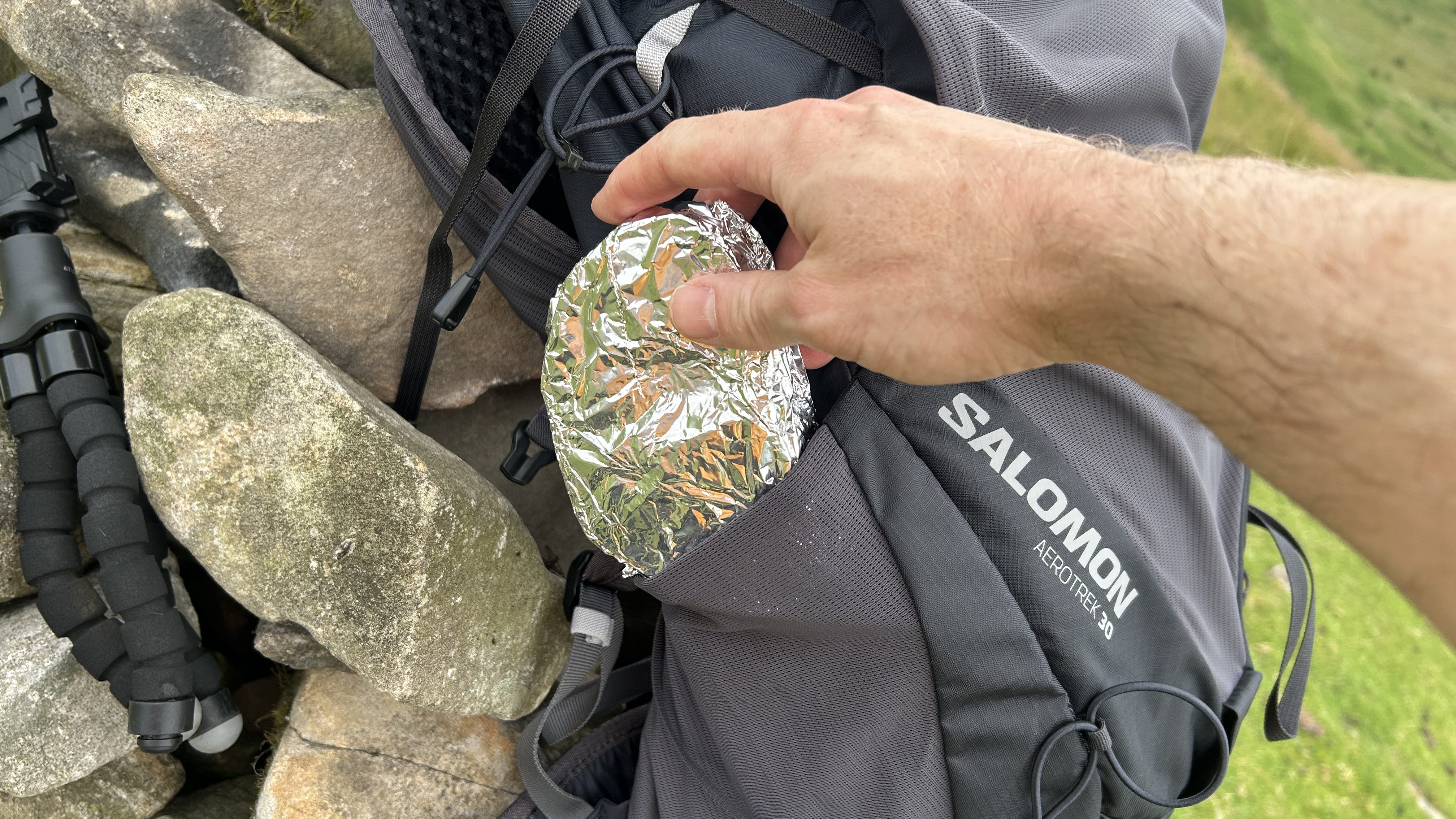
A real strength of the Aerotrek is the number of places you can store stuff, and how accessible many of these are while on the go. Like to eat your sandwiches while you move? Stash them in the easily reachable mesh side pockets. Want to be able to drink without breaking your stride? Then either make use the pack’s hydration bladder compatibility, or pop a couple of soft flasks in the harness system’s front mesh pockets.
The main compartment is relatively straightforward, with an elasticated pouch at the back for a bladder or anything else you’d want to keep separate from main melee of stuff, such as a magazine or two when travelling. There’s a Velcro loop above this for hanging the reservoir, as well as the usual hydration tube access slot. Finally, there’s also a zippered pouch attached to the top of the main compartment – ideal for your wallet.

As mentioned, a lid-style zippered compartment occupies the top of the pack. This comes with a little clip for attaching keys or a compass. This is where I tend to keep items like waterproof rain pants and a first aid kit – bits and bobs I want to keep safe but separate from everything else, where they are easy to grab in a fix. Rounding off the zippered options, there’s also one little hip belt pocket on the right.
A wealth of stretchy mesh is at your disposal here. The back of the pack wastes no space, employing a large mesh panel that’s accessible from either side – perfect for stuffing items of clothing. There are also large mesh side holsters, great for food or a water bottle or for sliding your trekking poles into. Side compression straps keep everything snug and can be used to secure said poles. The mesh chest pockets are shaped to hold soft flasks, while there's an integrated emergency whistle in the right hand pocket too – a nice touch.
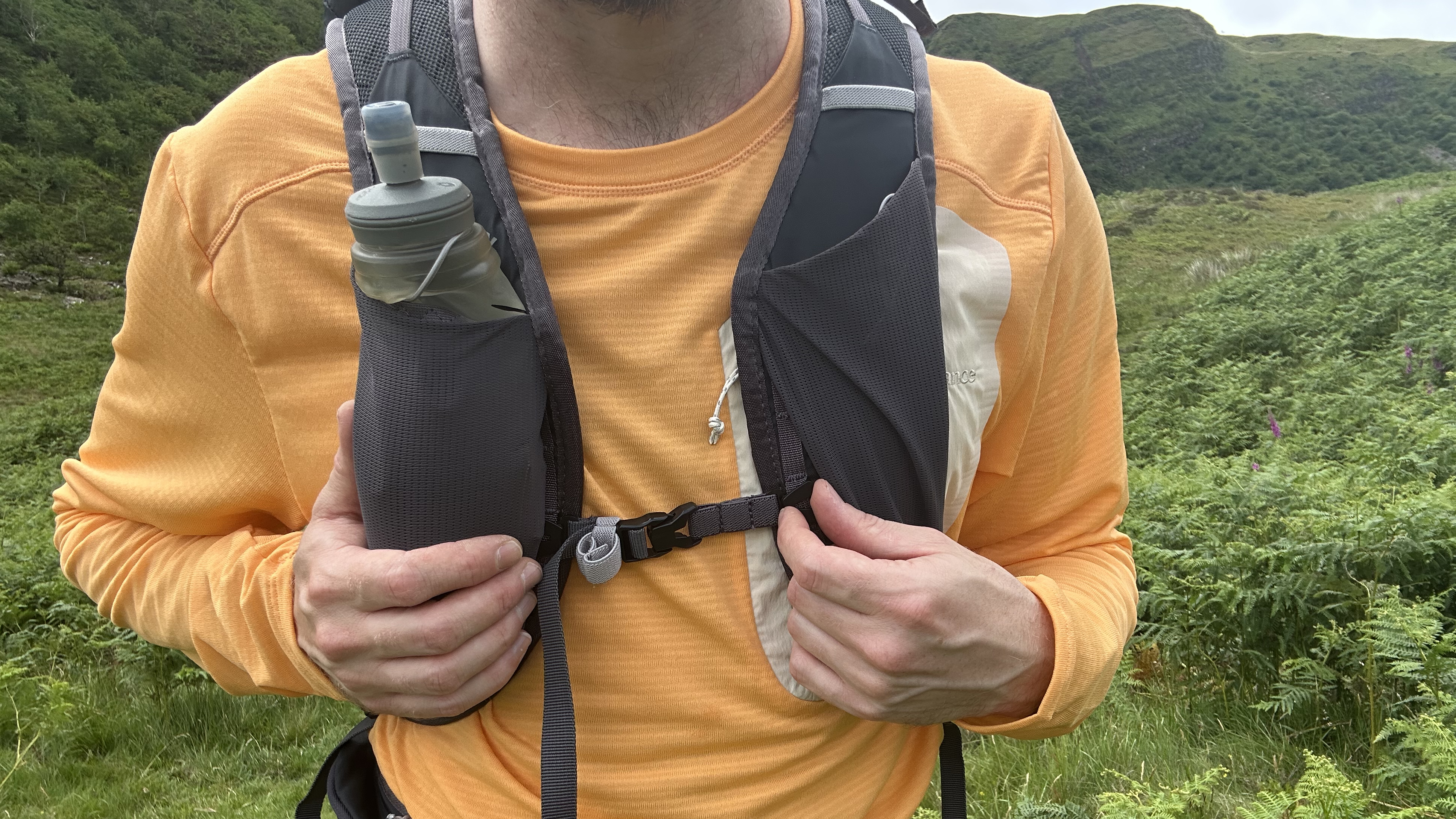
There are also attachment points for poles or ice axes on the back of the pack. Salomon has even seen fit to include a little sleeve at the bottom to safely house the pick of an axe, though it’s obviously not as reinforced as it would be on a dedicated mountaineering pack. Indeed, this is by no means a winter pack – I’d want something more robust and there’s no huge need for a ventilated back panel in the colder months. However, I could imagine the pack suiting warmer days in the Alps, during the sort of escapade where you might carry an axe for snowfield crossings, glacier traverses and the like.
In the hills
I’ve been testing the Aerotrek on warm weather hikes in England’s southwest and on the trails of Wales' Bannau Brycheiniog (Brecon Beacons) National Park. It’s a great size for long days on the hill or for hut-to-hut hiking, though a little on the small side for wild camping. Its ventilated back panel makes it an excellent choice for sweaty hikers, a club of which I’m unfortunately a stalwart.
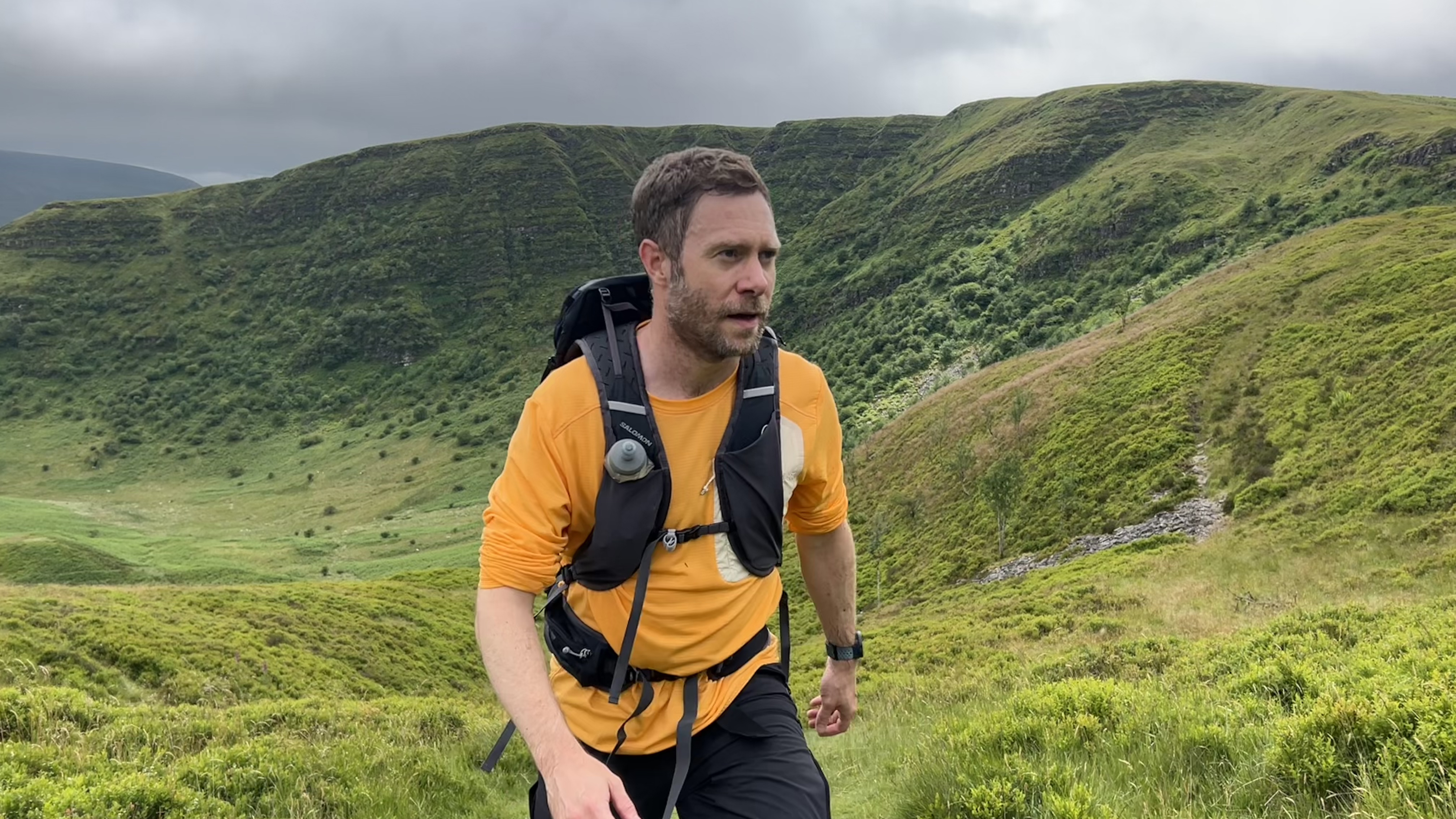
The thing about backpacks that boast supportive frames and back panels is that they lose something in the minimalist stakes, and tend to be a little heavier than simple, less fussy daypacks. This isn’t the case here. The Aerotrek is impressively lightweight and easy to use, while also being supportive and well-ventilated. Salomon have taken aim and hit the fast-hiking bullseye here.
I’ve said it before and I’ll say it again – the best daypack is the one that, for 95% of the time, you forget you're wearing. The Aerotrek is one of these packs. It worked with me during my speedy hiking days out, remaining comfortable and balanced whether I was walking or jogging. For the latter, I had to ratchet in the compression straps to stop things jiggling about inside, but it was fine once this was done.
I really valued the ability to stash all my water and nutrition in a way that meant I didn’t have to take the pack off to refuel or rehydrate. I prefer to use soft flasks, rather than a hydration reservoir, in the backcountry. This is mainly because I like to be fully aware of how much water I have left at any given time. The two mesh pockets on the harness are superbly designed to hold soft flasks and have a little elasticated loop to wrap around the cap. I could drink simply by lowering my head and supping.
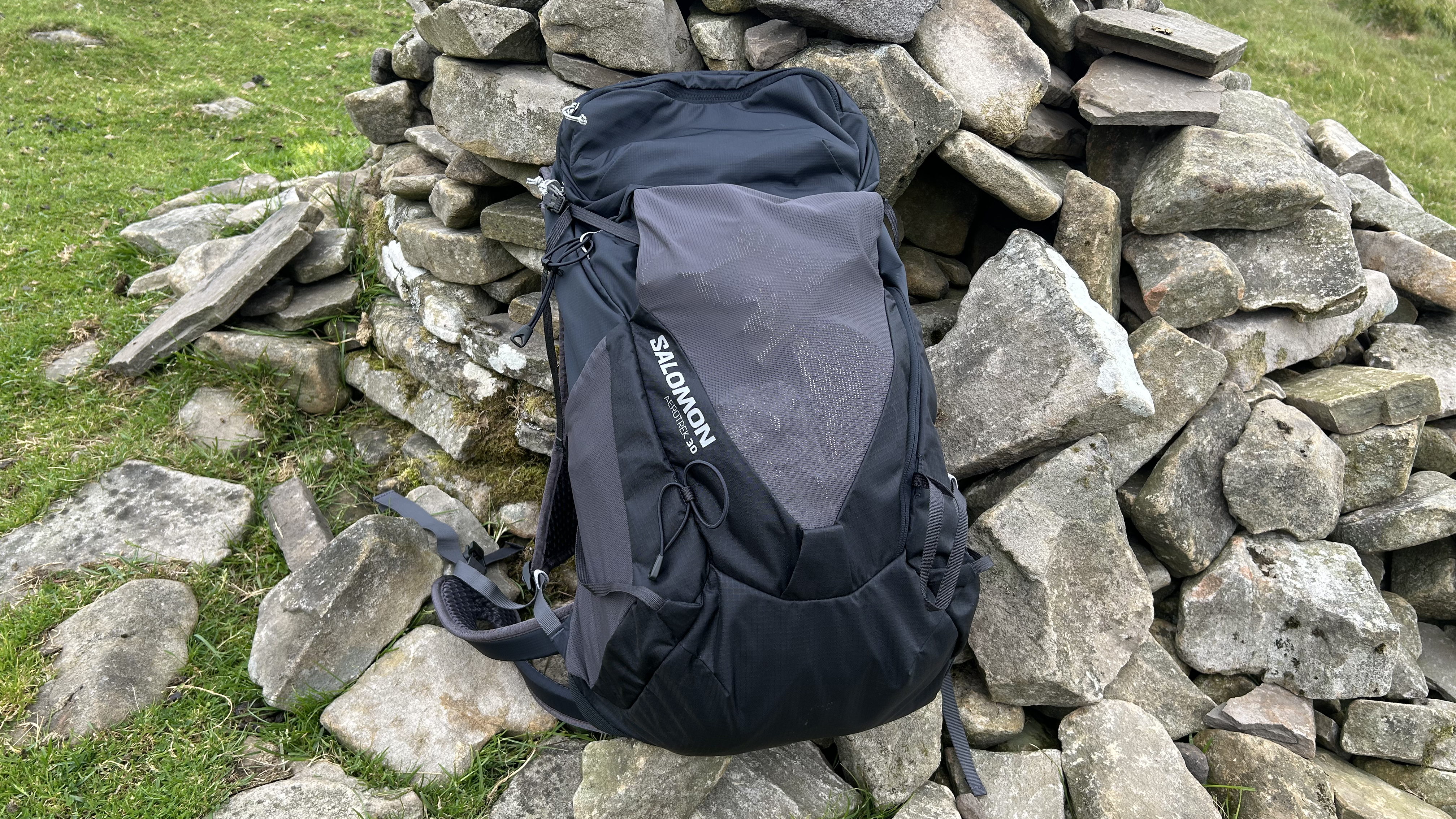
The mesh side pockets were also ideal for stashing any food items that I wanted readily to hand. Retrieving such items wasn’t as awkward as it is with some packs – as in I didn’t have to develop my contortionist skills just to get my hand into the pockets. The elastic mesh is also tight enough that I've been able to deposit used wrappers, without the fear that I might end up littering the backcountry. Also to hand was the little hip belt pocket, which is where I kept my gels and headlamp. All in all, an excellent array of to-hand storage options.
I also liked the option of large stretchy mesh panel on the back. It’s large enough to stuff a jacket into, which is a great option on those kinds of days when the weather can’t make up its mind and you’re constantly taking layers on and off. Being on the back, it’s obviously not possible to access this compartment without taking the pack off but when hiking with others it’s a handy solution: “Grab that map for me would you mate?”
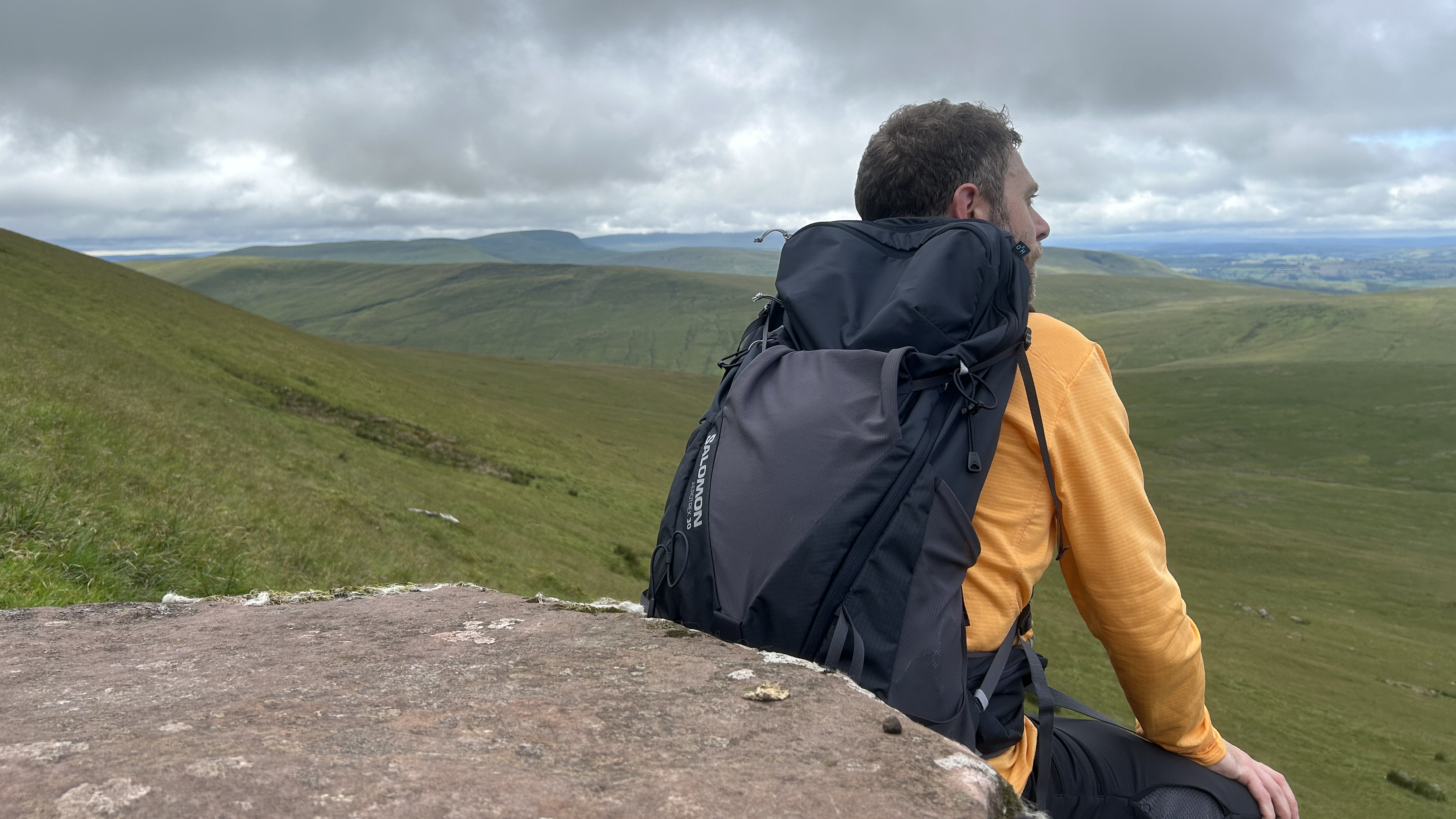
All in all, this a great lightweight daypack that’s well designed and gives hikers everything they need. Keeping the weight down has meant that the materials are perhaps not as durable as they could have been and this, coupled with the lack of recycled materials or circularity, means it doesn’t appear to be the most sustainable daypack choice out there. If Salomon could sort this out, we’d be onto a real winner.
Also consider
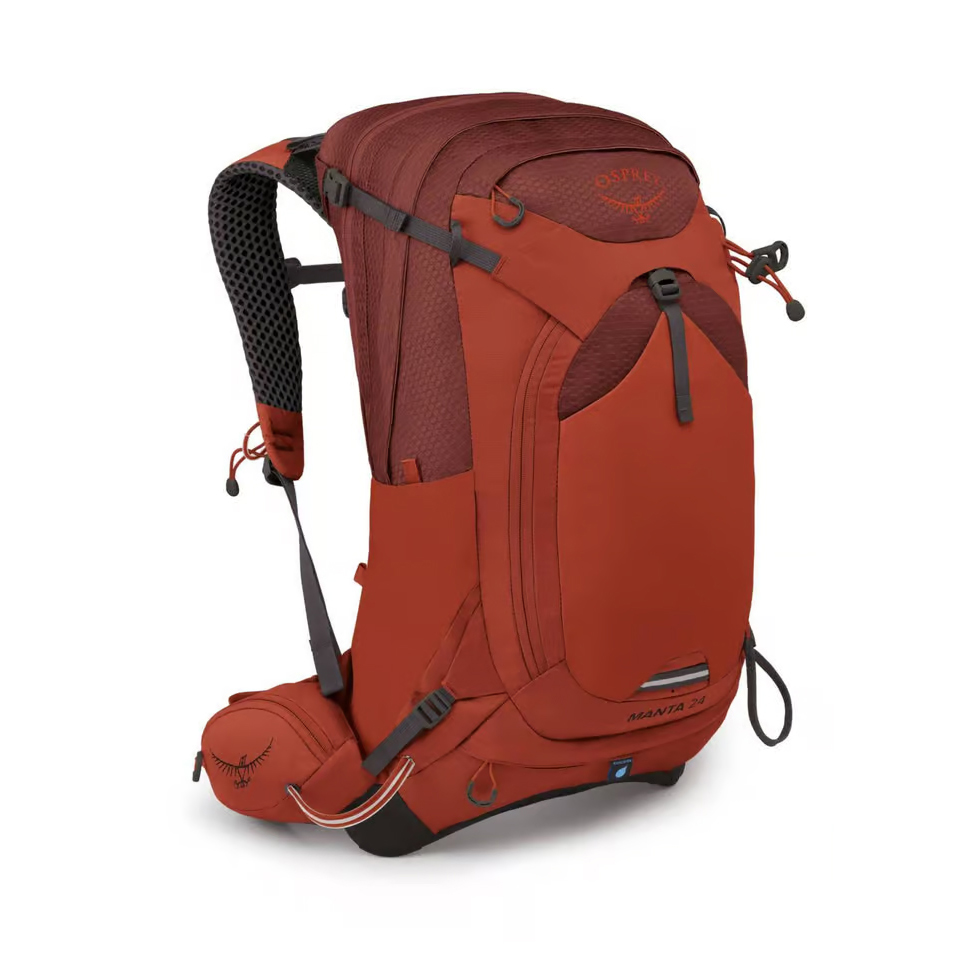
A classy hydration daypack that offers serious mountain goers a comfortable carry system for all kinds of day hikes. Its plush and adjustable harness system leads to a well ventilated and barely there carrying sensation, while the myriad storage options chime with hikers who like to be highly organized. It’s weight and more technical features means it’s not a daypack you’d take into town but for the joys of mountain hiking and hill walking days, few packs are better.
Pros
- Gender-specific fits
- Feels premium
- Durable, 100% recycled fabrics
- Well ventilated back panel
- Adjustable harness
- Loads of storage options
- 2.5L reservoir included
Cons
- Perhaps heavier than it needs to be
- More expensive than other daypacks of this capacity
- Not compatible with twin ice axes
- No integrated safety whistle
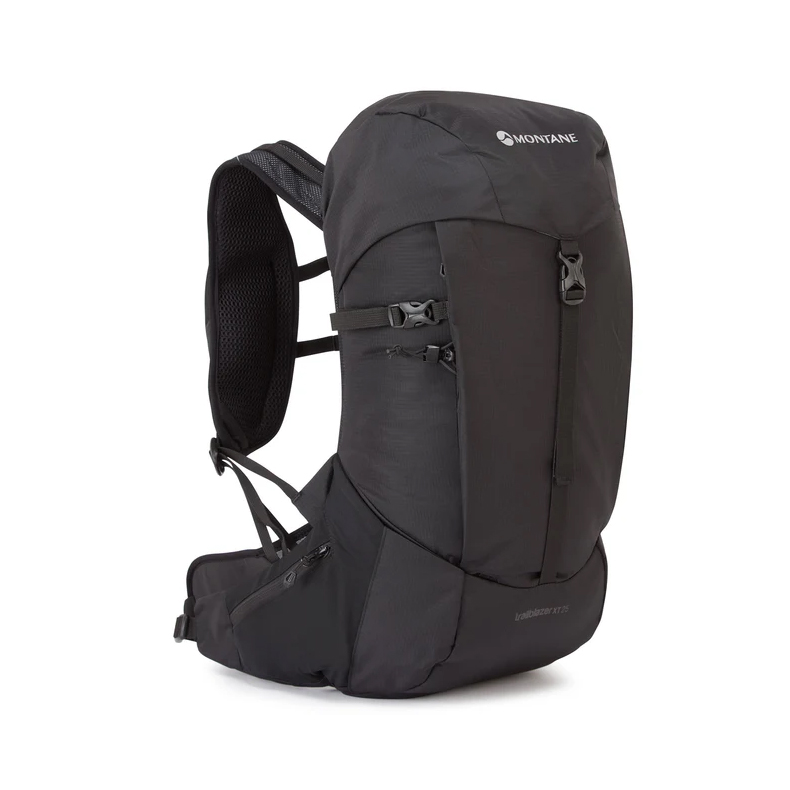
A great pack for day hikes and speedy technical adventures in the mountains, with loads of thoughtful design touches and attention to detail. It’s constructed from durable materials, so should last a long time and its eco-creds are also solid. It has features that nod towards winter adventure, though it’s a shame a helmet holder isn’t included for exterior storage, especially given its low capacity. It’s a minor qualm and one that doesn’t stop this from being a superb daypack.
Pros
- Intelligent design
- Excellent harness pockets
- Made from recycled materials
- Back system provides ventilation
- Durable main fabric
- Lots of storage options in a small package
Cons
- Only one axe attachment point
- Heavier than the equivalent standard Trailblazer pack
- A helmet holder would have been nice
- Side zipper and ice axe attachments in each other’s way
Comparison table
Daypack | Price | Weight | Best use |
|---|---|---|---|
Salomon Aerotrek 30 | £150 (UK) | 2lb 3oz / 992g | Fast hiking |
Osprey Manta 24 | $200 (US) | 2lb 14oz / 1.3kg | Day hiking |
Montane Trailblazer XT25L | $190 (US) / £150 (UK) | 2lb 4oz / 1kg | Fast hiking |
Alex is a freelance adventure writer and mountain leader with an insatiable passion for the mountains. A Cumbrian born and bred, his native English Lake District has a special place in his heart, though he is at least equally happy in North Wales, the Scottish Highlands or the European Alps. Through his hiking, mountaineering, climbing and trail running adventures, Alex aims to inspire others to get outdoors. He's the former President of the London Mountaineering Club, is training to become a winter mountain leader, looking to finally finish bagging all the Wainwright fells of the Lake District and is always keen to head to the 4,000-meter peaks of the Alps. www.alexfoxfield.com
